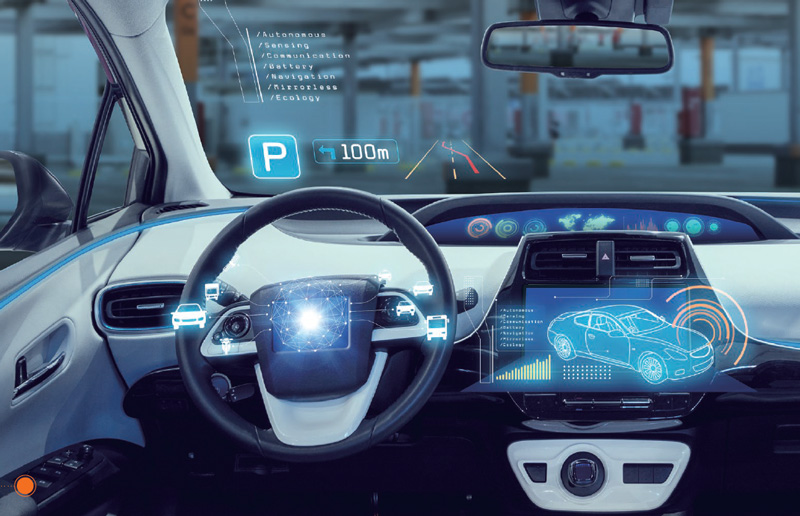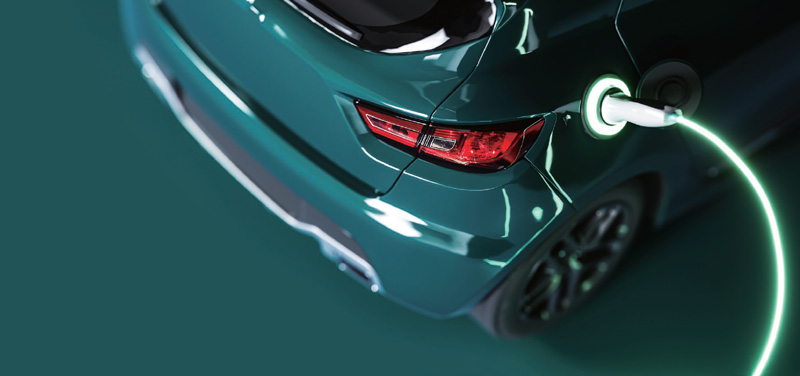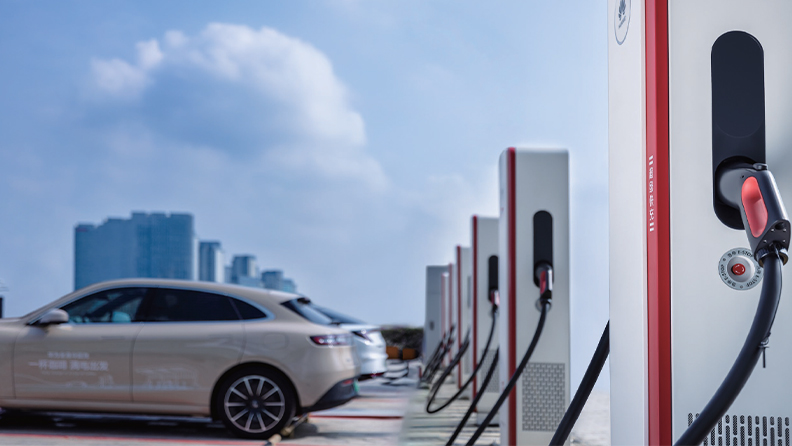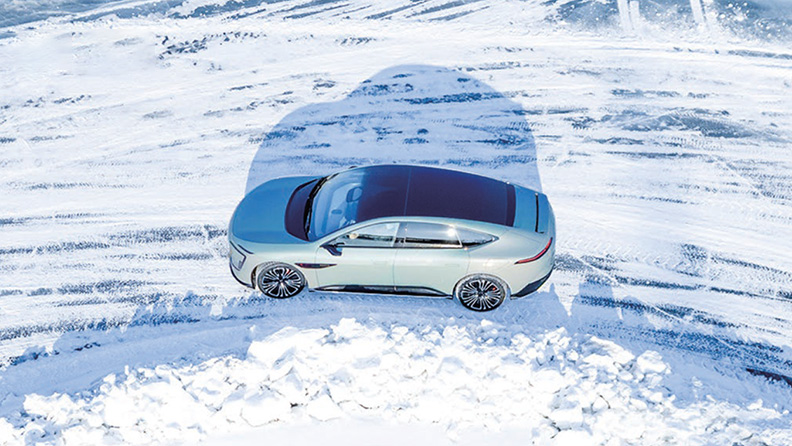Intelligent diagnosis, quick response
Mobility Electrification: Embracing the Future
According to Canalys, the global sales of electric vehicles (EVs) are projected to reach 17.5 million units in 2024, reflecting a significant year-on-year growth of 27.1%. This surge in sales is indicative of the increasing popularity and recognition of EVs. The electrification of mobility is an inevitable step, considering that the transportation sector is a major contributor to energy consumption and carbon emissions. Despite notable challenges such as price pressure, battery safety concerns, insufficient charging infrastructure, and range anxiety, the transportation sector still needs to accelerate the transition to EVs, and this can be achieved by leveraging favorable policies and technological innovations and raising public awareness.
Electrification is a Global Phenomenon
In response to global climate change, the international community has taken significant steps by reaching the Paris Agreement, with governments worldwide committing to reduce carbon emissions. Consequently, many countries have developed comprehensive plans to promote the growth of the EV industry. Notable examples include the EU's green transport strategy and South Korea's EV development plan for 2021–2025. Furthermore, governments have implemented a range of supportive policies, regulations, and standards to incentivize and facilitate the rapid development of the EV industry.

China prioritizes the growth of the EV industry and has designated it as a strategic emerging sector. To facilitate the electrification of transportation, the country has introduced a range of policies. One notable initiative is the New Energy Vehicle Industry Development Plan (2021–2035), which sets a target for EVs to comprise approximately 25% of total vehicle sales by 2025. Additionally, the government has implemented nationwide preferential policies, including subsidies for EV purchases and purchase tax exemptions.
It's worth mentioning that far-reaching laws like the Clean Air Act and other efforts to achieve carbon neutrality are driving the electrification of mobility. From private cars to public transportation, logistics vehicles and beyond, EVs are becoming more common in many areas. We're now on the fast track to the era of EVs.
Technological Innovation: The Driving Force
Electric, intelligent, and green development in the transportation sector has transformed the driving and traveling experience. Changing mindsets, technological progress, and business model innovations, particularly low-carbon and environmentally-friendly transport vehicles, are making urban transportation safer, more convenient, and more efficient.
1. The Power of Batteries
Batteries are core components of an EV. Battery performance and safety have a significant impact on the EV range, charging duration, power output, service life, and driving experience. Thanks to innovative battery technologies, EVs have seen a steady improvement in practicability, safety, and market competitiveness.
For instance, solid-state batteries use solid-state electrolytes instead of liquid electrolytes, offering numerous advantages such as high safety, high energy density, and long service life. These batteries are widely regarded as the next-generation battery for the automobile industry chain and will inevitably face intense competition in the market. China prioritizes the research, development, and industrialization of solid-state batteries. In recent years, it has introduced a series of policies, including the Implementation Opinions on Strengthening the Integration and Interaction of New Energy Vehicles and Power Grids and the Guidelines on Promoting the Development of the Energy Electronics Industry, to accelerate the development and application of solid-state battery technology. Against this backdrop, multiple battery manufacturers and automotive enterprises in China have announced their progress in solid-state batteries, including the mass production of semi-solid-state batteries. SERES and CATL have collaborated on ultra-fast charging technologies, battery safety, and integration of vehicles, electricity, and charging to advance innovations in battery technology. The AITO M9 fully uses CATL battery products. It is predicted that the global shipment of solid-state batteries will reach 614.1 GWh in 2030, and the market value in China will reach CNY20 billion.
Waste batteries contain hazardous substances such as lead and mercury. Improper disposal of these substances can cause significant environmental damage and have adverse effects on human health. Recycling traction lithium batteries is essential to protect the ecological environment, enhance resource utilization efficiency, and ensure the sustainable development of the EV industry. However, the research on and implementation of EV battery recycling are still in their early stages worldwide. In China, the Ministry of Industry and Information Technology and other departments have introduced relevant policies and regulations, including Interim Measures for the Recycling of Traction Batteries in New Energy Vehicles and Administrative Measures for Echelon Utilization of Traction Batteries in New Energy Vehicles. These measures aim to regulate the comprehensive utilization of waste traction lithium batteries by proposing pilot projects for recycling traction lithium batteries used in EVs and exploring diversified recycling models. The ultimate goal is to establish an industry chain extension system that covers traction battery recycling, echelon utilization, and material regeneration. With an estimated millions of tons of traction batteries set to be retired worldwide by 2030, there is a significant market opportunity for traction battery recycling.
2. Breakthrough in Charging and Energy Management
Charging and energy management are crucial aspects of EVs. They enhance the driving range and battery life, optimize charging efficiency, balance grids and loads, reduce charging duration and costs, thus improving the overall driving experience and safety.
Technological advancements have brought ultra-fast charging technology into the spotlight. The mass production of third-generation semiconductor materials like silicon carbide and gallium nitride has significantly accelerated the development of high-voltage charging technology, making ultra-fast charging a reality. It is projected that by 2028, vehicles equipped for ultra-fast charging will capture over 60% of the market share. A prime example is CATL's latest 4C superfast charging battery, which can be fully charged in just 15 minutes. Furthermore, the widespread adoption of 800 V high-voltage platforms will significantly enhance vehicle efficiency and reduce charging duration. Increased collaboration between cloud systems, charging stations, chargers, and vehicles, and more intelligent charging networks will considerably enhance user experience and improve grid synergy. According to the Action Plan for Accelerating the Construction of a New Power System (2024–2027) introduced by the National Development and Reform Commission and other departments, energy storage resources of EVs should be fully utilized to promote intelligent and coordinated charging. Coordinated charging of EVs reduces grid operation risks while improving grid benefits and reliability. Fast charging, intelligence, networking, and diversified value-added services will reshape user experience, drive technological innovation of EVs, and accelerate the energy transition.
As AI and big data technologies continue to evolve, EV energy management systems are becoming increasingly intelligent. By detecting the energy consumption, road conditions, and driving habits of vehicles in real time, intelligent energy management systems automatically adjust energy allocation policies to optimize energy efficiency. Additionally, the systems interact with the power grid to implement bidirectional energy flow between vehicles and the power grid, providing energy storage and peak-shaving services. The Internet of Vehicles (IoV) technology intelligently optimizes charging policies, determining the optimal charging time and location based on power grid loads and electricity price fluctuations. This reduces charging costs and balances the supply and demand of the power grid.
3. Inclusive Intelligent Transportation Systems
Intelligent transportation systems effectively apply advanced technologies, such as information, computer, data communication, sensor, electronic control, automatic control, operations research, and AI technologies, to transportation, service control, and vehicle manufacturing. These systems ensure safety, improve efficiency, enhance the environment, and save energy. Intelligent transportation systems provide technical support and operation platforms for mobility electrification, and mobility electrification provides a foundation for the wider application of intelligent transportation systems. For instance, intelligent traffic signal control systems adjust the signal light duration based on real-time traffic to optimize the traffic flow, intelligent parking management systems improve parking efficiency, and intelligent public transportation systems optimize bus routes and shifts to shorten the waiting time for commuters.
From the technical perspective, motors and electric control systems are fundamental hardware for intelligent EVs, as they allow EVs to efficiently integrate devices, such as sensors and controllers, to implement higher-level autonomous driving and intelligent functions. Autonomous driving technology further improves the stability and reliability of vehicles and ensures driving safety through environment sensing, intelligent voice assistance, and predictive maintenance. IoV technology facilitates intelligent communication between vehicles, enabling them to exchange traffic information and improving overall transport efficiency while reducing traffic congestion and accidents. Additionally, AI technologies optimize the energy efficiency and cruising range of EVs, making vehicles smarter, safer, and more environmentally friendly.
Mobility Electrification Is Gaining Speed
Recent statistics indicate that the transportation sector is responsible for approximately 23% of global carbon emissions. To achieve global carbon neutrality, a crucial step is the electrification of mobility. The increasing adoption of EVs worldwide has led to the rapid construction of high-quality charging infrastructure and the integration of intelligence into transportation. Consequently, the transportation sector is experiencing a golden era of development.
1. EVs for Every Home and Business
In a survey conducted by McKinsey on European consumers in 2024, it was found that 38% of car buyers who have not yet purchased EVs expressed their intention to choose an EV as their next vehicle. IEA's Global EV Outlook 2024 projects that EV sales in China will reach approximately 10 million units in 2024, making up about 45% of total car sales in the country. Additionally, the report states that EVs will account for roughly one in four cars sold in Europe.
The rapid rise in the popularity of EVs is accompanied by several challenges that need to be quickly addressed. Key among these is the need for automakers to continuously enhance the performance, cruising range, charging speed, safety, and comfort of EVs. Additionally, the deployment of charging stations must keep pace with the growing number of EVs on the road to ensure convenient and reliable charging options. Furthermore, IoT services must be enhanced to enable greater interconnectivity between vehicles and homes, as well as among transportation facilities.
Huawei Digital Power has been committed to advancing mobility electrification since 2014. It has continuously invested in the industry, driving development with technical breakthroughs. Its DriveONE e-mobility solution is designed to provide a safe, comfortable, and optimal driving experience, enabled by integrated and intelligent control of the power domain. Huawei DriveONE features the industry's first SiC high-voltage four-wheel-drive platform, which integrates front asynchronous and rear synchronous motors. A four-wheel-drive car built on the platform consumes the power equivalent to a two-wheel-drive car and can accelerate from 0 to 100 km/h in 3 seconds while extending the cruising range by more than 40 km. The DriveONE 10-in-1 high-voltage ePowertrain enables an A-segment car to drive 10 km with every kWh of energy charged, gaining industry-wide recognition. Huawei DriveONE's iTRACK function infuses intelligence into the powertrain, swiftly enabling cars to seamlessly counter slipping and bumping, enhancing safety while ensuring a comfortable driving experience.
2. High-Quality Charging Infrastructure is Set to Become Ubiquitous
"An army marches on its stomach." Similarly, the widespread adoption of EVs relies heavily on the availability of charging stations. As the demand for EV charging infrastructure continues to rise, it is imperative to focus on the rapid construction of intelligent and efficient charging stations that are scalable, interconnected, and environmentally friendly, aligning with the principles of sustainable development. According to the latest statistics, the global public charging network saw an addition of nearly 310,000 chargers in the second quarter of 2024. China leads the world in the installation of public chargers, while Europe is experiencing the fastest growth. Many Chinese cities are racing to deploy ultra-fast charging stations. For instance, Shenzhen is transforming into a city powered by ultra-fast charging, aiming to build a world-class ultra-fast charging infrastructure service network capable of supporting diverse application scenarios by the end of 2024. Guangzhou has launched a city-wide strategy for ultra-fast charging to promote the research, development, and implementation of high-power fast charging technologies. Chongqing is also developing into a city that offers convenient ultra-fast charging by targeting to install 4000 ultra-fast chargers by the end of 2025. The integrated solution of PV + ESS + charger, which combines PV power generation, energy storage, power output, and battery status detecting functions, has emerged as a preferred choice for numerous industrial parks and public areas. Additionally, residential charging infrastructure has gained significant popularity, supported by financial assistance and preferential policies.

Huawei Digital Power is building a user-friendly, grid-friendly, and efficient smart charging network for diverse charging scenarios, including cities, city clusters, logistics, and campuses. It promotes cutting-edge ultra-fast charging technologies to enable the smooth evolution of PV + ESS + charger, achieving superior experience, high quality, and optimal benefits. Compared with conventional solutions, Huawei's solution improves power utilization by about 30%. It doubles the turnover rate under the same power conditions, accelerating the development of charging infrastructure for high-quality charging anywhere, anytime. For instance, Hubei Communications Investment Group Co., Ltd. worked with Huawei Digital Power to transform the Hanshi Expressway into a comprehensive energy demonstration line in Hubei by leveraging Huawei's ultra-fast charging solution, meeting the charging requirements with ease during peak periods.
3. Electric Public Transportation Contributes to Smart and Low-Carbon Cities
According to the Opinions on Accelerating the Comprehensive Green Transition of Economic and Social Development introduced by the State Council, China will intensify efforts to promote low-carbon transportation vehicles and transition urban public service vehicles to electric. By 2030, the carbon emission intensity per converted turnover of transport vehicles will decrease by about 9.5% compared with 2020.
According to the Notice on Initiating the First Batch of Pilot Areas for Comprehensive Electrification of Vehicles in Public Fields, pilot projects for vehicle electrification have been initiated in 15 cities, including Beijing, for business vehicles, urban buses, sanitation vehicles, taxis, postal express vehicles, urban logistics vehicles, and airport vehicles. It is estimated that more than 600,000 EVs will be launched, and over 700,000 chargers and 7800 battery swapping stations will be built. In recent years, electric buses and taxis are evidence of urban vitality. Shenzhen is the first city in China to fully electrify its bus fleet, reducing the annual carbon dioxide emissions from buses by 1.353 million tons. In Zhengzhou, the Level 3 intelligent and networked bus rapid transit (BRT) system for the East 3rd Ring Road is one of the first pilot projects of intelligent transportation in China. The system significantly improves the public transportation experience. In the Meishan Port Area of the Ningbo-Zhoushan Port, 62 unmanned electric container trucks have been deployed for loading and unloading. With just one hour of charging, the trucks have a driving range of over 120 km.
To promote the electrification of public transportation, a series of policies and measures have been introduced, including pilot projects to electrify public vehicles and the implementation of renewal subsidies for electric urban buses and traction batteries. Additionally, technological advancements accelerate iterative upgrades and infuse intelligence into vehicles. Vehicle-road-cloud integration solutions optimize traffic management, improve the safety and reliability of autonomous driving, and enhance the quality of public transportation services, effectively accelerating the electrification of urban public transportation systems.
The Industry Offers Tremendous Opportunities
Electrification is speeding up the development of the global transportation sector. The number of EVs in the market is growing significantly. Electrification and intelligent technologies are widely used in various fields. Intelligent vehicles that combine autonomous driving, AI, IoV, and electrification technologies substantially improve traffic safety and optimize the travel experience. Flying cars are also expected to gain popularity, driving the development of the low-altitude economy and leading industry innovations in the future.
Mobility electrification will become more widely recognized, shaping a broader market landscape. Governments worldwide will continue to increase their support for the EV industry and promote business development along the industry chain. In addition, technologies and infrastructure such as batteries, drive systems, and charging facilities will be continuously optimized. Thanks to continuous innovations, EVs will be adopted in more areas. Driven by policies, technological innovations, and market demands, the transformation of mobility electrification is gaining global momentum at a rapid pace. This transformation will effectively improve the urban ecosystem, alleviate traffic congestion, significantly reduce operation costs, enhance the green travel experience, and promote the high-quality development of the industry. The electrification of mobility will shape a greener and smarter future.




